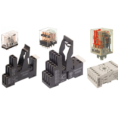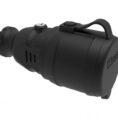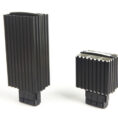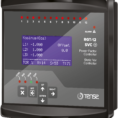In the limitless expanse of the sky, where roads and landmarks do not dictate directions, aviation lights are vital safety markers. Flying an airplane safely requires these glowing guides, which provide visibility and communication beyond what is possible through speech alone. Airplane lights are an integral part of the intricate dance of air traffic control, serving to inform pilots during take-off and landing, make planes visible to one another, and alert ground personnel.
A Flying Lights Spectrum
There is no universally applicable design for aviation lighting. Their range and use are as varied as the planes and airports they assist. During the crucial takeoff and landing phases, pilots are guided by runway lights, while taxiway lights show the routes to and from terminals and runways. The presence of navigation lights on an aircraft facilitates its visibility to other aircraft in the airspace, hence aiding in the maintenance of a safe interval between them. The aviation industry around the world uses a common language of light, where each color and pattern has its meaning.
Bringing Light to Technology

Aviation lighting relies on cutting-edge technology that is both essential and highly developed. In addition to being visible from far away, these systems need to be very dependable and resilient to harsh weather. Because of its superior visibility, reduced energy consumption, and extended lifespan compared to older lighting options, light-emitting diode technology has completely transformed aviation illumination. This development is in line with worldwide initiatives to lessen the aviation industry’s negative influence on the environment and promote sustainability while simultaneously bolstering safety.
Signals from regulators
International and national aviation authorities impose stringent regulations on aircraft lights and their usage to guarantee safety and uniformity worldwide. The placement, brightness, and colour of lights on runways and aeroplanes are all governed by these rules. Not just observing the rules, these laws ensure the safety of passengers, crew, and aircraft in flight.
Providing Guidance for Safe Navigation
When it comes to navigation and safety, aviation lights are just as important as their more obvious functional uses. When flying at night or in bad weather, pilots rely on these lights as their sole source of spatial orientation. By using varied lighting configurations to convey different phases of flight or operational needs, they also serve as essential indicators for the aircraft’s state and intentions, boosting safety both in the air and on the ground.
The Human Element
The importance of humans in aviation lighting is paramount, even more so than technology and rules. The ability to read and react to aviation lights allows pilots, air traffic controllers, and ground staff to make split-second decisions that guarantee the safety and efficiency of air transport. Aviation safety is best demonstrated by this mutually beneficial relationship between human knowledge and technical assistance.
Conclusion
A vast web of protocols and systems keeps the aviation industry running smoothly, reliably, and safely. Amidst this, aviation lights are particularly noteworthy for their role as quiet guardians, directing planes in inclement weather and at night. You can trust that Electron Trading, with its extensive online inventory of automation and industrial electrical supplies, knows how important these parts are. The aviation sector relies on Electron Trading for efficient and dependable lighting solutions; we are dedicated to meeting the needs of our customers with fast delivery, top-notch products, and competitive costs. This helps keep the skies a safe and fascinating place to fly.










































































































